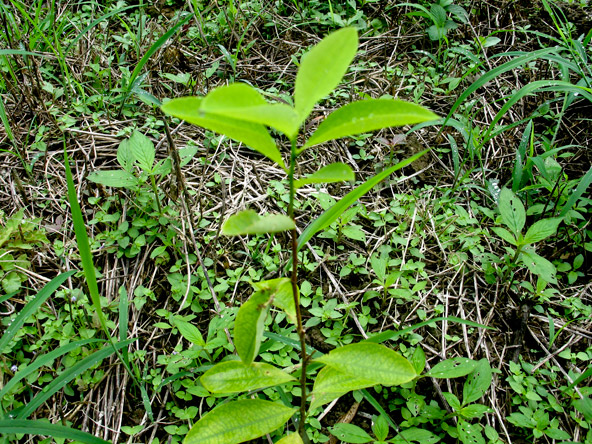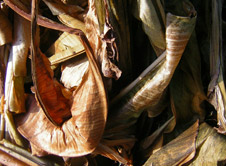
June 2007. Narino, Colombia. A coca plant being cultivated by local farmers.
Photo: Phillip Robertson
Freddy Rendón, who commanded the Bananero block of the AUC, confirmed this detail from prison in an interview with El Tiempo a few weeks after we talked to Lorenzo in Apartadó. Urabá is the place where the AUC received its weapons. It's a perfect contraband port, which is why it was so prized. And there was not a single shipment, but a series of them and these deliveries occurred at the time when the AUC was taking new territory, killing with impunity, and making millions. The AUC had come up with a brilliant system to import weapons to Urabá after a great deal of thought and effort. Like the octopus, the paramilitary group adapted and solved a critical problem in its environment-its need to supply a growing army. After the rifles arrived at the Chiquita docks, there was an epidemic of AUC killings.
As we were leaving, I asked Lorenzo if we could tape an interview with him the next morning. He agreed on the condition that his face be hidden.
The next morning, the three of us took the buseta back to Apartadó, not far from where the big weapons shipment arrived on the Chiquita docks. Seeing three men enter a dive hotel with a video camera, the maid tending the rooms thought a porno film was in the works. When we tried to explain, she laughed and turned down the beds. We had arrived in the middle of a driving rainstorm.
We set up the camera and adjusted the lighting to obscure Lorenzo's face.
Lorenzo has the face and the dark skin of an indigenous South American. His habits are rural and other Colombians think he is coarse and without manners. They are also afraid of him. Lorenzo is a spitter who leaves a constellation of saliva spatters on the floor. He can't help it; he can't stop the saliva from filling his mouth.
We started by discussing Lorenzo's position in the AUC, his rise through the ranks. Bullet scars cover his chest and legs, some with entrance and exit holes. Lorenzo lifted his shirt to show them. He has at least six wounds on his body, some of them are from combat with the FARC, the rest are from a robbery attempt when he was traveling alone, carrying the supply money for his AUC brigade. It was three of his own men who robbed him, shot him, and left him for dead in the city market. "I was so confident, I just went to the market alone with the money," he told me. Lorenzo still keeps his revolver handy in case he runs into one of them. Over time he rose to the level of commander in the AUC. "I worked with the Bananero block. Those arms made it to many blocks. They divided it among I don't know how many. The company gave a lot of support and that armaments were divided among many blocks. And I realized that they were distributing it everywhere and that Mancuso's people were getting the arms too. So I found out about that and I noticed that. Different blocks shared it. Some of them would be M9s, Monterus, there were lots of AK-47's, there were M60s and PKMs. They were all brand new and they went to different fronts."
When the Otterloo arrived, Lorenzo worked from evening to dawn at the port loading the AUC trucks. It was a large shipment, fourteen container loads of equipment, and it took a long time to move. "Another thing I noticed was the exchange of drugs for weapons," he said. I caught this statement after I had the entire tape translated in Bogotá a few days later. What exactly was happening at the Chiquita docks?
When I saw the transcript of the interview, I decided to fly back to Turbo with Carlos and ask Lorenzo about the drugs for weapons exchange and the Chiquita freighters. I wanted to understand how the system worked.
 LEAD IMAGE: Dried banana leaves.
LEAD IMAGE: Dried banana leaves.Photo: Unknown
© Phillip Robertson, 2009-2014.
